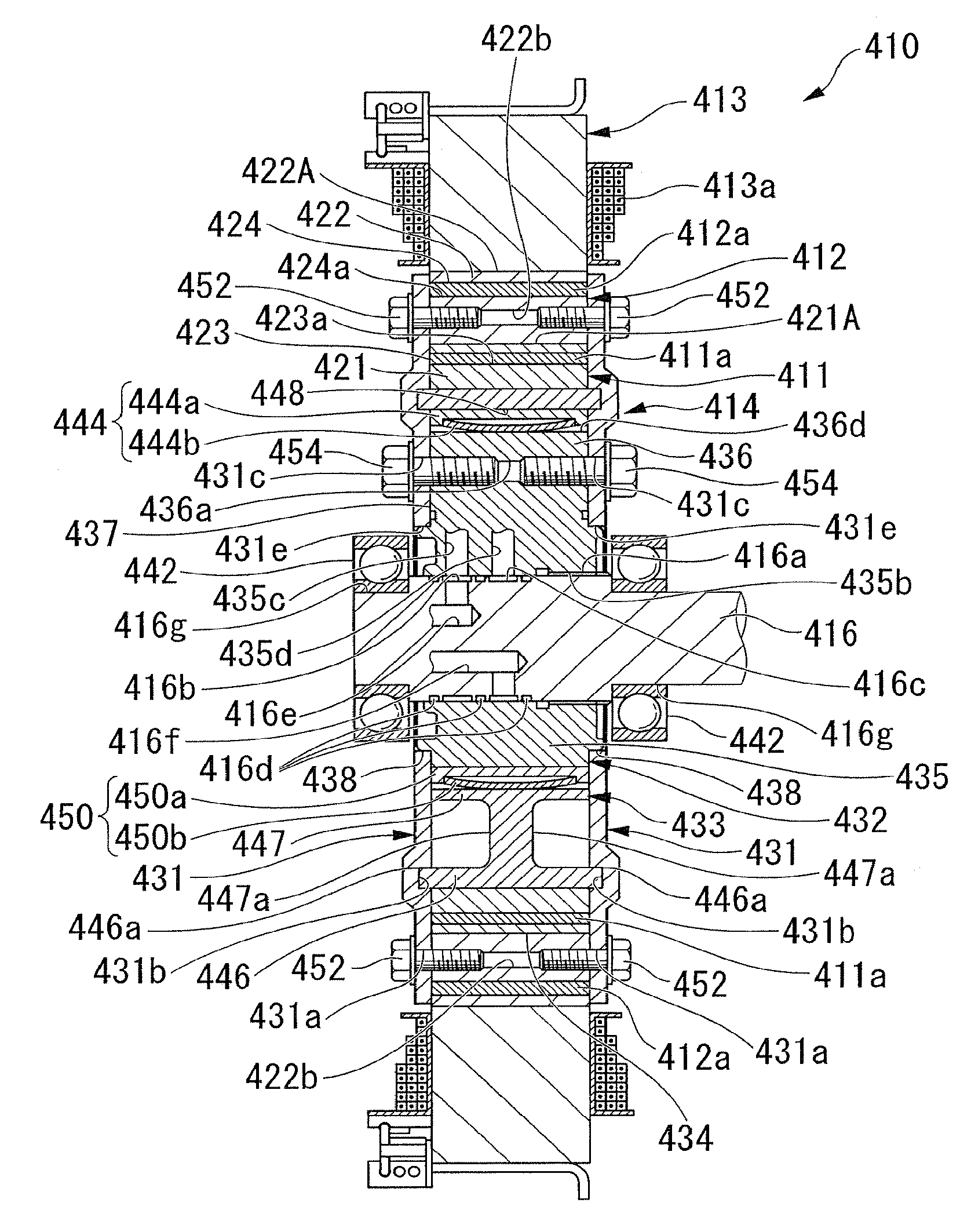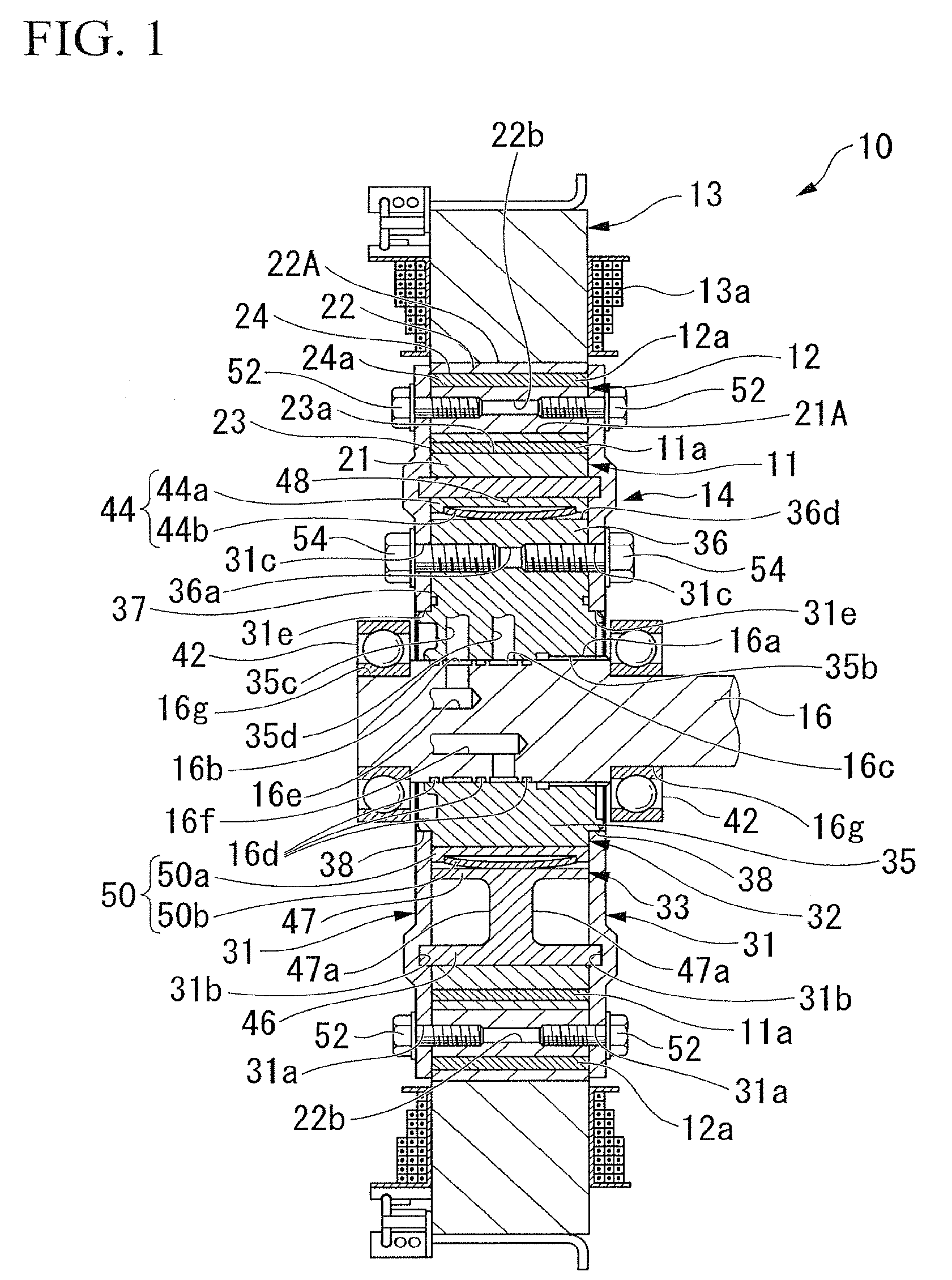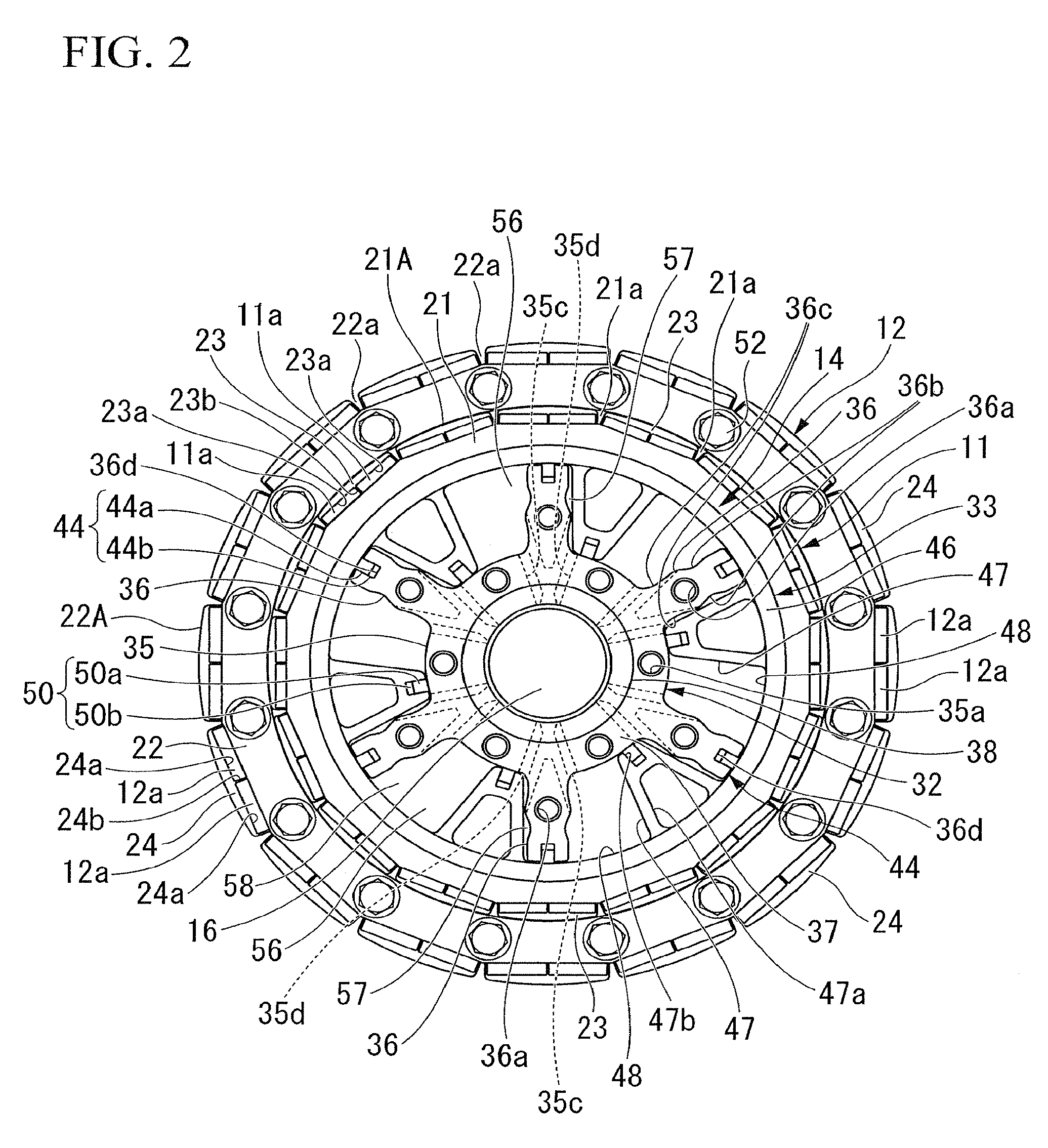Motor
a motor and motor technology, applied in the field of motors, can solve the problems of difficult to properly control the phase difference of the first and second rotors only by the action of centrifugal force, and the inability to properly control the phase difference of the first and second rotors with proper timing, etc., to achieve the maximum value of torque output of the motor, increase the amount of interlinking magnetic fields, and increase the effect of field flux
- Summary
- Abstract
- Description
- Claims
- Application Information
AI Technical Summary
Benefits of technology
Problems solved by technology
Method used
Image
Examples
first embodiment
[0167]Hereinafter, a motor according to a first embodiment of the present invention is described, referring to FIG. 1 to FIG. 10B. As shown in FIGS. 1 to 3, the motor 10 according to this embodiment is a brushless DC motor including a substantially annular inner rotor 11 which is rotatably provided about the axis of rotation of the motor 10, a substantially annular outer rotor 12 which is rotatably provided about the same axis of rotation radially outside the inner rotor 11 and which is provided so as to be matched with the inner rotor in position in the direction of the axis of rotation, a stator 13 which has a plurality of phases of stator windings 13a, shown in FIG. 1, which generate a rotating magnetic field which rotate the inner rotor 11 and the outer rotor 12, a rotating mechanism (rotating device) 14 which is connected to the inner rotor 11 and the outer rotor 12, and changes the relative phase between the inner rotor 11 and the outer rotor 12 with the hydraulic pressure (fl...
second embodiment
[0209]Next, for a motor according to a second embodiment of the invention, different portions from the above first embodiment are described mainly with reference to FIGS. 11 and 12. In addition, the same reference numerals are given to the same portions as the above first embodiment, and the description thereof is omitted.
[0210]In this embodiment, a portion of the rotating mechanism 14 in the above first embodiment is altered. First, as shown in FIG. 11, one drive plate 31, similarly to the above first embodiment, is fixed to the outer rotor 12 with by the bolts 52, . . . , and 52, is fixed to the boss 35 of the vane rotor 32 by bolts (not shown), and is fixed to the impeller portions 36 of the vane rotor 32 by the bolts 54.
[0211]On the other hand, an annular drive plate 61 is arranged axially opposite the drive plate 31 so as to cover the outer rotor 12 and an outer peripheral portion of an inner rotor 76. In the drive plate 61, bolt insertion holes 61a, . . . , and 61a which pass ...
third embodiment
[0216]Next, for a motor according to a third embodiment of the invention, different portions from the above first embodiment are described mainly with reference to FIG. 13. In addition, the same reference numerals are given to the same portions as the above first embodiment, and the description thereof will be omitted.
[0217]In this embodiment, a rotating mechanism 70 which is different from the above first embodiment is used. The rotating mechanism 70 of this embodiment has a pair of annular drive plates (first member) 71 and 71 which are fixed on both axial sides of the outer rotor 12 so as to cover a space inside the outer rotor 12, a supporting member 73 which is integrally provided in one drive plate 71 and is supported by an output shaft 72 of the motor 10, a supporting member (first member, drive plate) 74 which is integrally provided in the other drive plate 71 and is supported by the output shaft 72, an inner rotor body 75 with the same configuration as the inner rotor 11 of...
PUM
 Login to View More
Login to View More Abstract
Description
Claims
Application Information
 Login to View More
Login to View More - R&D
- Intellectual Property
- Life Sciences
- Materials
- Tech Scout
- Unparalleled Data Quality
- Higher Quality Content
- 60% Fewer Hallucinations
Browse by: Latest US Patents, China's latest patents, Technical Efficacy Thesaurus, Application Domain, Technology Topic, Popular Technical Reports.
© 2025 PatSnap. All rights reserved.Legal|Privacy policy|Modern Slavery Act Transparency Statement|Sitemap|About US| Contact US: help@patsnap.com



